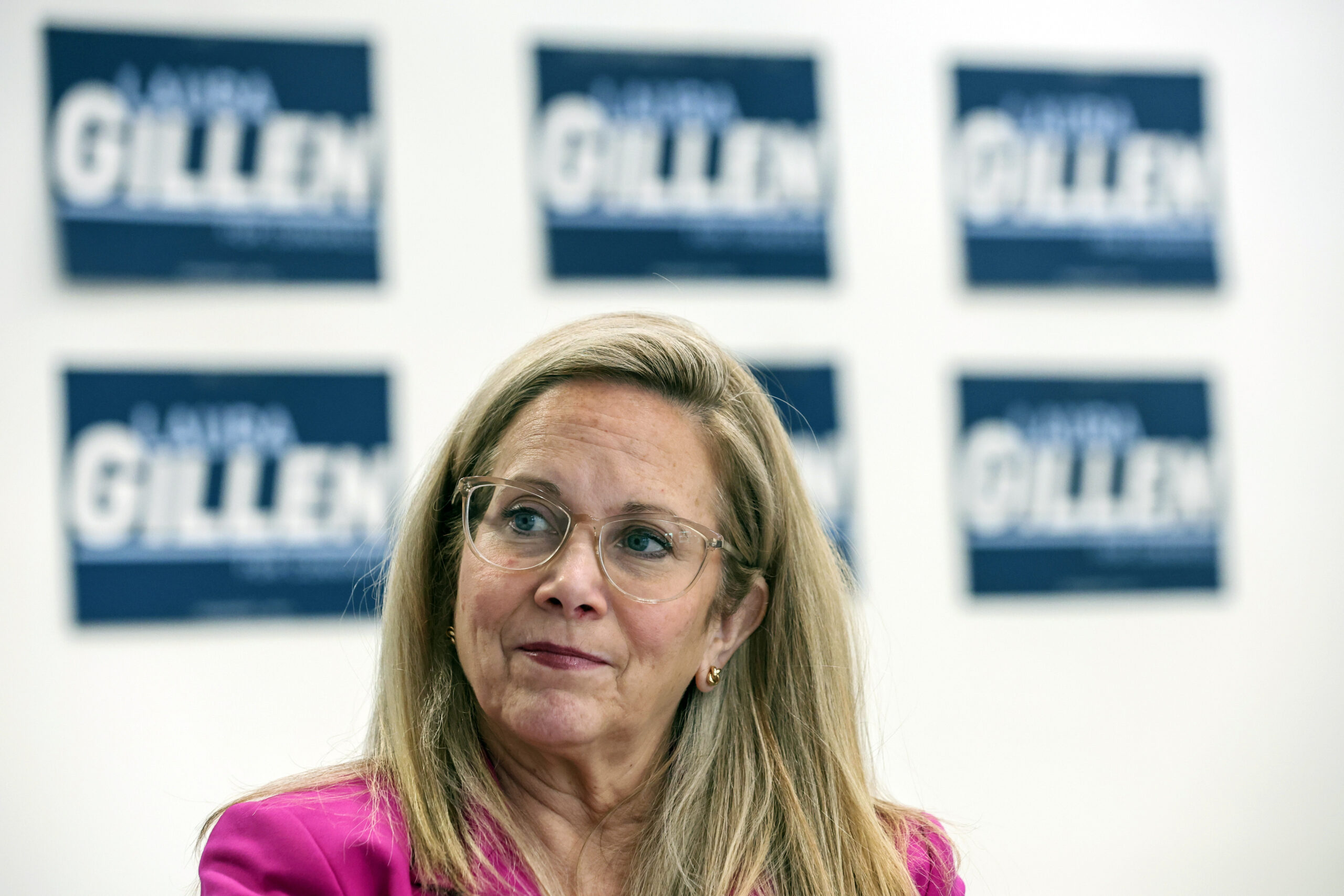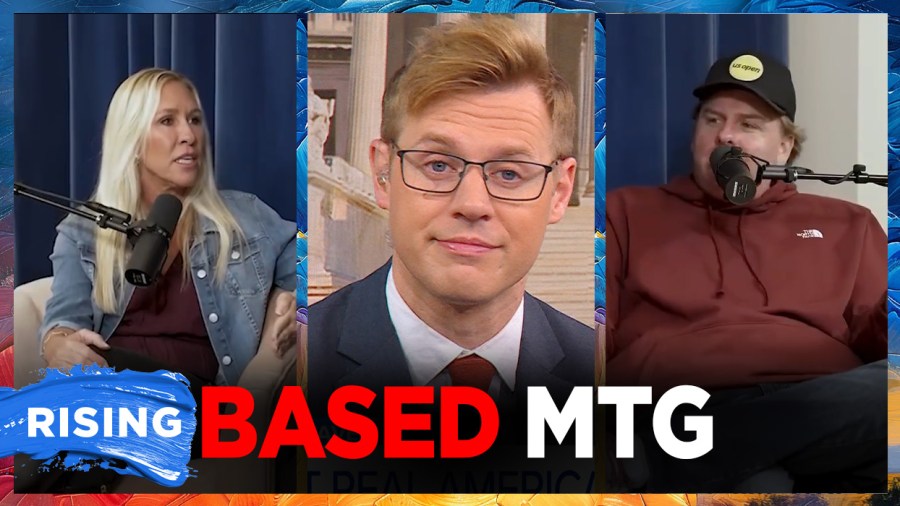Democrats’ hardline opposition to rising health care costs isn’t earning them voters’ trust on economic issues — a disconnect that lays bare the party’s challenge heading into next year’s midterms.
Voters blame Republicans more than Democrats for the federal government shutdown, according to a review of polling conducted after services shuttered. An Economist/YouGov survey of 1,648 Americans showed 41 percent hold the GOP accountable for the lapse in federal funding, compared to 30 percent who point a finger at Democrats and 23 percent who hold the parties equally responsible. A 2,441-person CBS News/YouGov survey also found Americans blame Republicans more than Democrats — 39 percent to 30 percent — with 31 percent faulting both. And a Harvard/Harris poll demonstrated 2,413 voters impugned Republicans more than Democrats by 6 points.
Those same voters, however, delivered the GOP a 4-point advantage when asked which party they trust more on economic issues. And a survey from Democratic-aligned firm Navigator Research showed 1,000 registered voters faulting Republicans for the shutdown by 11 points, but giving them a 2-point advantage on inflation and cost of living.
That dichotomy underscores an electoral hurdle for the party locked out of power: Even as Democrats hold the line over expiring health care subsidies that could send millions of Americans’ insurance prices soaring, voters still favor Republicans on the economy and cost of living.
“Are we going to get all the working class back? Probably not,” said Rep. Henry Cuellar (D-Texas), who is seeking reelection in a redrawn Texas district while facing federal bribery charges. “[But] I see an opening here. … And we need to jump on that and just really focus and repeat over and over and over that we Democrats are interested in bringing costs down.”
The next challenge for his party, he added: “Make sure people understand we are a viable alternative.”
The shutdown-polling paradox has shown up in surveys for months, as Democrats struggle to move voters who are souring on President Donald Trump and his party’s handling of the economy and inflation into their corner. And it underscores the uphill battle Democrats face in wresting power from Republicans, even as they narrow their scattered messaging to affordability.
Frontliner Rep. Laura Gillen (D-N.Y.) called her party’s shutdown stance “an important step” toward convincing voters Democrats can tackle rising costs.
“And it’s a crucial step to take right now … to make sure that people don’t see their premiums go up exponentially,” said Gillen, who is defending the Long Island swing seat she flipped last year. “But then it needs to be part of a broader discussion to show that we are on the side of the American people and we care about the economic pain they’re feeling and we have a concrete plan.”
The party is still hashing out the particulars of that plan, which depending on the candidate ranges from pitching a hardscrabble background to railing against a rigged economy and vilifying the billionaires that benefit from it.
Right now, Democrats are trying to leverage their minimal power to force Republicans to stop Affordable Care Act subsidies from expiring at the end of the year, attempting to squeeze out a policy win on a top cost-of-living issue as they scramble to regain working-class voters.
The political winds have been shifting in Democrats’ favor on the economy. Trump’s net approval rating on the subject has nosedived since the start of his second term, polling averages show. Voters routinely rank inflation as one of their top issues, but disapprove of his handling of it. The latest CBS/YouGov poll showed three-quarters of adults don’t think Trump is doing enough to lower prices — one of his 2024 campaign trail pledges. Labor Department statistics show the job market is slowing.
Despite signs of economic distress, Republicans consistently enjoy a polling advantage on the economy. And Liam Kerr, who co-founded the centrist WelcomePAC, warned that Democrats won’t be able to erase it through a single stand on health care costs.
“You can’t just do it one time and all is forgotten,” Kerr said. “Playing against type requires even more effort.”
Nevertheless, Democrats remain confident they can reverse their heavy losses in 2024 by drilling down on voters’ cost-of-living concerns, according to interviews with half a dozen congressional candidates.
They cast their party’s shutdown play as part of a broader strategy that ranges from hammering Republicans over tariffs that could drive up prices for consumers and for businesses, to battling utility companies over rising bills. And they believe the slate of working-class candidates the party is putting up for House and Senate seats, from a firefighter in Pennsylvania’s Lehigh Valley to a waitress in western Wisconsin, can convince voters that Democrats care about blue-collar Americans who have turned toward Trump in recent years.
They’re getting backup from Democrats’ national campaign arm, which on Friday launched a five-figure digital-and-billboard ad campaign and organizing effort to alert voters to the pending increase in their premiums.
Still, shutdowns carry risks for both parties, especially the longer they drag on. The Trump administration on Friday began firing federal workers, which could increase pressure on both sides to bring their standoff to an end. And some polls already show voters think Democrats should cave and reopen the government; a sentiment expressed by nearly two-thirds of voters in the Harvard/Harris survey and just over half of respondents to the Navigator poll.
But Democrats are dug in.
“We have to give people a reason to fight, and we have to get back to catering to the many over the few,” Cherlynn Stevenson, a state representative running for the Democratic nomination in Kentucky’s open 6th District, said. “This can be a big turning point for our party.”
Alec Hernández contributed to this report.














